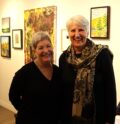General News
Province to discuss women in the workplace
July 13, 2017
By Sarah Sobanski
The province wants to know what barriers you think women face in the workplace and how to break them down.
Ontario is developing a cross-province strategy to empower women in the workplace. It aims to see “all women and girls achieve their full social and economic potential.” It’s released an online survey to gather ideas.
“I was really excited to see this,” said executive director for Maggie’s Resource Centre of North Hastings Tanya MacKinnon.
She suggested the strategy is the result of provincial focus groups including Maggie’s and other similar organizations.
According to MacKinnon the road to developing a women’s empowerment strategy started earlier this year.
A group of agencies similar to the local centre were concerned when the opportunity to reapply for the Investing in Women’s Futures grant didn’t appear.
“What that snowballed into was a focus group that was developed by the province,” said MacKinnon. “[There] were suggestions about the amount of money needs to be revisited. We need to network as a group of organizations.”
The yearly maximum $90,000 grant funds organizations such as Maggie’s but hasn’t been update in close to two decades.
“It becomes a challenge to operate at the same funding level and offer the same quality of service,” MacKinnon noted.
She added, “I think that’s what this is all about. They’ve heard pretty loud and clear that they need to be investing in women’s futures and removing those barriers.”
The Women’s Economic Empowerment Strategy is set to be launched in the fall. It’s taking on further initiatives to close the gender wage gap, “encourage gender diversity on boards, provide violence against women services and supports, and increasing access to high-quality child care.”
“There is much more to do,” according to the release detailing the survey.
“That’s exactly what our Investing in Women’s Futures program was designed to do. I’m hoping that this means not only are they going to take input from all of the organizations like ours across the province … but they’re opening it up to others to provide their input as well which is great because you’re getting a bigger picture — not just what we see but what everybody sees,” said MacKinnon.
According to the province, more than 42 per cent of single-mom families were considered low income in 2014.
Women earn around 26 per cent less than men but hold more university and college degrees. The wage gap is higher for Indigenous and racialized women and women with disabilities. In 2015, 51 per cent of TSX businesses didn’t have women on their boards.
“Where’s the disconnect there?” MacKinnon asked. “[They’ll be able to] get feedback directly from the women of the province whether it’s women we serve here in Bancroft, or women from Thunder Bay or Ottawa. What do they see the barriers as? Is it the cost of education? Is it getting child care so that you can get more education? What are the issues?”
The survey is available at www.ontario.ca/form/survey-womens-economic-empowerment until August 15.
“I’m really intrigued at where this could be going because there has been talk of needing to invest more in women to help with domestic violence and all of the issues with women’s economic security. This could only mean better things.”

















